
Features
Crops
New Varieties
Small new edibles pack big flavour
With trends in food gardening, the edible plants category attracted consumer and culinary attention at the University of Guelph’s Vineland container trials in 2018.
February 11, 2019 By Rodger Tschanz
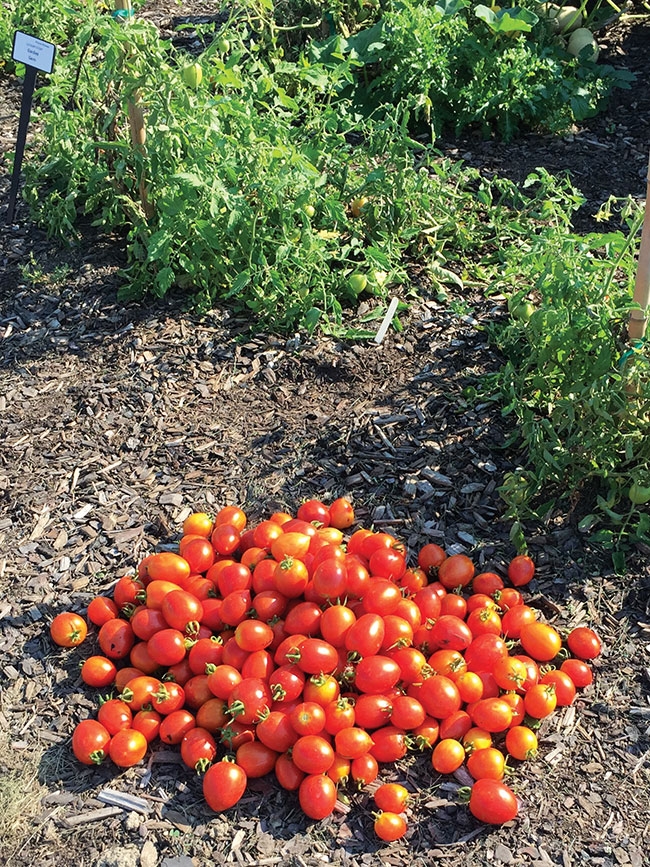 One Garden Gem tomato plant produced 557 fruit in a 16-inch container.
One Garden Gem tomato plant produced 557 fruit in a 16-inch container. Each year, a few vegetables are entered into the University of Guelph’s Vineland container trials as candidates for vegetables in small urban spaces. This edible plant category attracted attention at the trials, not only from the public, but from culinary professionals as well. Here are some of the highlights from this past season.
The 2018 trial was the first time that Proven Winners submitted edibles for trialing purposes. Amongst the submissions were basil and tomatoes. The two tomato entries from PW originated from a tomato breeding program at the University of Florida, with the goal of replicating the flavour of an heirloom tomato. Garden Gem produced large quantities of small, snack-sized fleshy tomatoes; many of the fruit had a pointed end. One plant growing in a 16-inch container produced 557 fruit before the trial season ended in early September. The growth habit is semi-determinate, and while it is possible to grow this plant in a container, it will develop into a large plant needing support of some kind. The second tomato in the series is Garden Treasure. The fruit is considered to be mid-sized and the growth habit of the plant is indeterminate. Like Garden Gem, it will need support in both ground beds and containers. The 16-inch container trial in Vineland produced 130 fruit per plant by the first week of September. Both Garden Gem and Garden Treasure were selected for tolerance for growing in hot, humid conditions, disease tolerance and having an heirloom taste. Informal tasting sessions by visitors to the trial garden elicited very favourable comments.
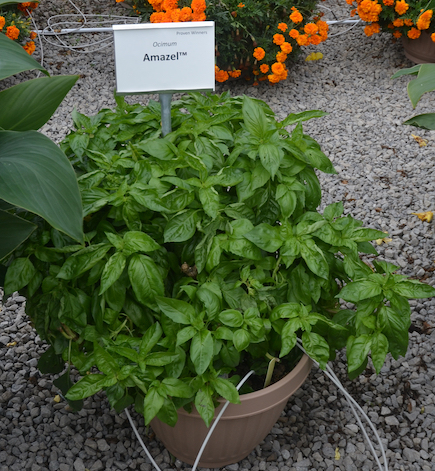 The Italian sweet basil, Amazel, proved to be both prolific and disease tolerant as well, growing well into September without disease issues such as downy mildew. We didn’t do a yield trial on this plant which would have required us to continually cut the plant back before it produced flowers. As with most basil selections, once the plant blooms, the fragrant foliage becomes somewhat bitter to the taste; the best flavoured leaves came from the fresh tender shoots. That said, the unpruned plants in our 2018 ground bed trials reached heights of 79 cm and a spread of 110 cm, producing a welcome fragrance in the garden.
The Italian sweet basil, Amazel, proved to be both prolific and disease tolerant as well, growing well into September without disease issues such as downy mildew. We didn’t do a yield trial on this plant which would have required us to continually cut the plant back before it produced flowers. As with most basil selections, once the plant blooms, the fragrant foliage becomes somewhat bitter to the taste; the best flavoured leaves came from the fresh tender shoots. That said, the unpruned plants in our 2018 ground bed trials reached heights of 79 cm and a spread of 110 cm, producing a welcome fragrance in the garden.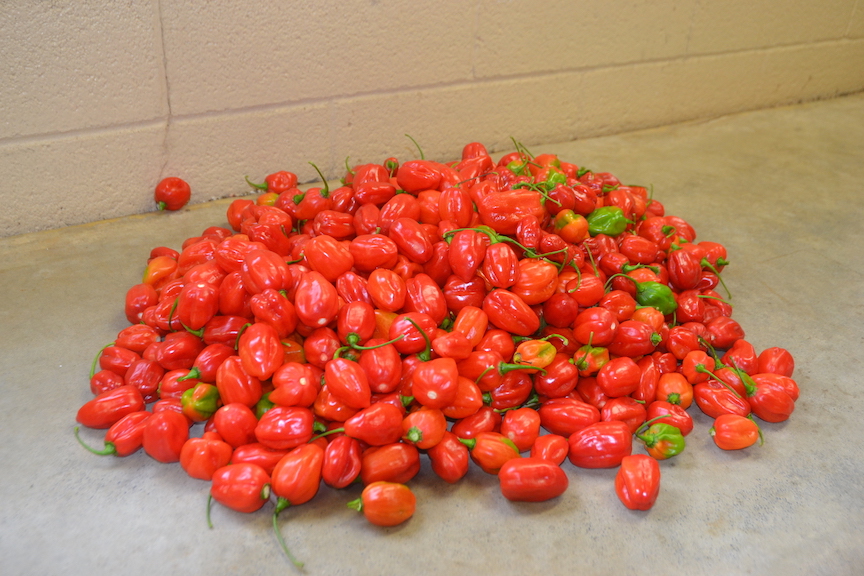 Primero Red is a new habanero pepper that has relatively mild and flavourful flesh. (Note: the seeds and midrib are still extremely spicy). The plant habit is upright, compact and suitable for containers. One 16-inch container planted with three plants in the Vineland trial produced 536 peppers by mid-September. Hospitality services at the University of Guelph used this pepper to produce a very flavourable hot sauce for use on campus. When covered in ripe fruit, this plant is quite attractive. At the 2018 Royal Agricultural Winter Fair in Toronto, pots of Primero Red from the summer trial were used for display purposes.
Primero Red is a new habanero pepper that has relatively mild and flavourful flesh. (Note: the seeds and midrib are still extremely spicy). The plant habit is upright, compact and suitable for containers. One 16-inch container planted with three plants in the Vineland trial produced 536 peppers by mid-September. Hospitality services at the University of Guelph used this pepper to produce a very flavourable hot sauce for use on campus. When covered in ripe fruit, this plant is quite attractive. At the 2018 Royal Agricultural Winter Fair in Toronto, pots of Primero Red from the summer trial were used for display purposes.
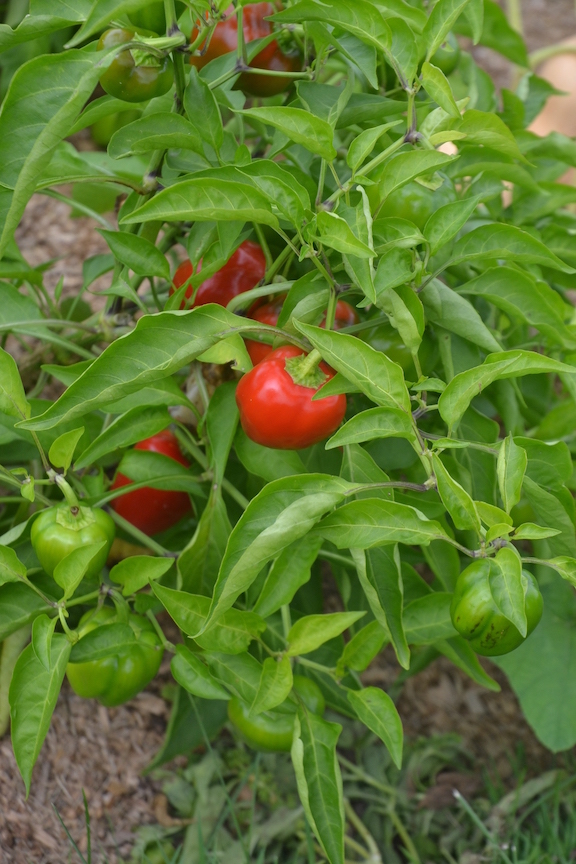 Snackabelle Red is a small, attractive bite-sized bell pepper with good sweetness and a tougher skin than most normal-sized bell peppers. This is another excellent choice for container growing.
Snackabelle Red is a small, attractive bite-sized bell pepper with good sweetness and a tougher skin than most normal-sized bell peppers. This is another excellent choice for container growing.
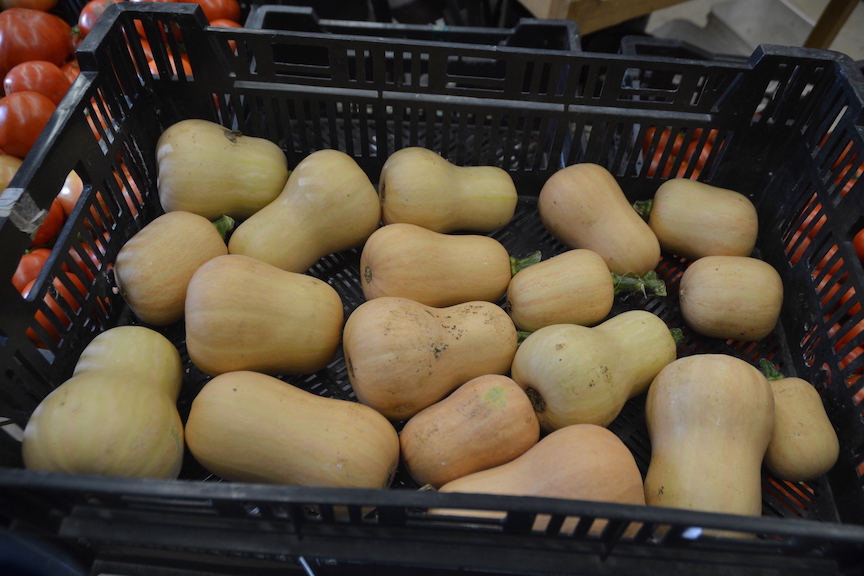
Consumers are hungry for edibles
Overall, characteristics such as high yields, ornamental/edible dual purposes, container friendliness, unique and desirable flavours and disease tolerance were all in demand by visitors to the garden trials.
Container vegetables can be very easily marketed, especially when they contain great flavour, have good fruit size, and display disease tolerance for the most part. Small fruit functions as ready-made single portion sizes and can produce an attractive display either by being left on the plant or in culinary preparations.
To help consumers succeed though, other supportive items may need to be available at garden centres. Tomatoes may need a cage or the squash may need a trellis system. Mesh or repellents may be needed to deter wildlife such as rabbits, deer or squirrels. Garden centres should have items like these on hand, as well as trained staff in place, to ensure the customer has everything they need to start.
Rodger Tschanz is the trial garden manager at the University of Guelph. He can be reached at rtschanz@uoguelph.ca
Print this page